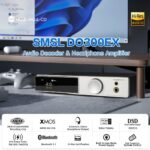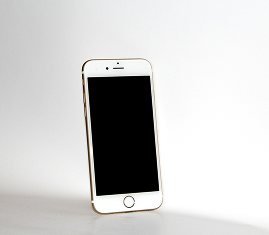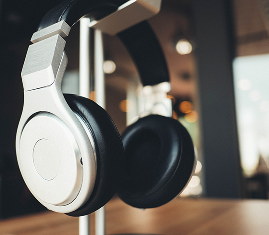In this article, you will learn about reference headphones and why they are essential for audio professionals. Reference headphones are designed to provide accurate and detailed sound reproduction, allowing you to hear every nuance in your audio recordings. We will discuss the key features and technologies that make reference headphones stand out and their benefits in various audio applications. Whether you are a musician, producer, or audiophile, understanding reference headphones will enhance your audio experience. Reference headphones are a type of professional-grade headphones that are designed to provide accurate and detailed sound reproduction. They are often used by audio professionals, such as music producers, audio engineers, and sound designers, for music production, audio mixing, mastering, film and video post-production, broadcasting, and podcasting. In this article, we will explore the definition and importance of reference headphones, the different types of reference headphones, their key features, benefits, applications, and how to choose and use them effectively.

Understanding Reference Headphones
Defining Reference Headphones
Reference headphones are designed to reproduce sound as accurately and faithfully as possible. Unlike consumer headphones, which are often tailored to enhance specific frequencies or provide a more enjoyable listening experience, reference headphones strive to provide a neutral and uncolored sound reproduction. This means that what you hear through reference headphones accurately represents the original audio source without any added emphasis or distortion.
Importance of Reference Headphones
Reference headphones are crucial in various audio-related tasks, where accurate and detailed sound reproduction is essential. They allow audio professionals to make critical decisions regarding sound recording, mixing, and mastering, ensuring that the final product sounds as intended. By providing a neutral and uncolored sound, reference headphones allow for precise audio monitoring, making it easier to detect and correct any flaws or imperfections in the audio.
Different Types of Reference Headphones
Several reference headphones are available in the market, each with unique characteristics and suitability for other use cases. The two main types of reference headphones are open-back and closed-back headphones.
Open-back headphones have an open design that allows sound to pass through the ear cups freely. This design results in a more natural and spacious sound reproduction. Still, it also allows sound to leak in and out of the headphones, making them less suitable for use in noisy environments or situations requiring privacy.
On the other hand, closed-back headphones have a sealed design that isolates the listener from outside noise and prevents sound leakage. This makes closed-back headphones ideal for use in recording studios or other environments where noise isolation is essential. However, the closed-back design can sometimes result in a more confined and less spacious sound.
In addition to the open-back and closed-back design, reference headphones can vary in frequency response, impedance and sensitivity, and transducer technology. These factors can impact the headphones’ overall sound quality and performance, and it is essential to consider them when choosing the correct reference headphones for your needs.
Key Features of Reference Headphones
Frequency Response
Frequency response refers to the range of frequencies that a pair of headphones can reproduce. Reference headphones typically have a comprehensive frequency response, covering the entire range of human hearing, roughly 20 Hz to 20 kHz. A complete frequency response ensures that no part of the audio spectrum is overlooked or distorted, allowing for accurate and detailed sound reproduction.
Impedance and Sensitivity
Impedance and sensitivity are necessary specifications determining how well different audio sources can drive reference headphones. Impedance measures how much electrical resistance the headphones have, and sensitivity measures how efficiently they convert electrical signals into sound.
Lower-impedance headphones are easier to drive and can be used with a broader range of audio devices, including smartphones, laptops, and portable audio players. On the other hand, higher-impedance headphones may require a dedicated headphone amplifier to achieve optimal performance. Sensitivity is related to how loud the headphones can get; higher-sensitivity headphones need less power to achieve the same volume level.
Transducer Technology
The transducer technology used in reference headphones significantly impacts their sound quality and performance. The most common type of transducer used in headphones is dynamic drivers, which use a diaphragm and voice coil to produce sound. Active drivers are known for their durability and ability to reproduce a wide range of frequencies.
Other transducers used in reference headphones include planar magnetic and electrostatic drivers. Planar magnetic drivers provide faster and more accurate sound reproduction, while electrostatic drivers offer greater detail and clarity. However, these technologies are often more expensive and less common in reference headphones.
Open-back vs. Closed-back Design
As mentioned earlier, reference headphones can have an open-back or closed-back design. The choice between these two designs depends on the specific requirements and preferences of the user. Open-back headphones provide a more natural and spacious sound, allowing sound to leak in and out. Closed-back headphones offer better noise isolation but can result in a more confined sound.
Comfort and Ergonomics
Since reference headphones are often used for extended periods, comfort and ergonomics are important considerations. Reference headphones should have a comfortable headband and ear cups that provide a secure but not too tight fit. The ear pads should be soft and breathable, and the headphones should be lightweight to prevent discomfort or fatigue during long listening sessions.
Benefits of Using Reference Headphones
Accurate Sound Reproduction
The primary benefit of reference headphones is their ability to provide accurate and uncolored sound reproduction. This allows audio professionals to hear the audio exactly as it was recorded or intended, without any added emphasis or distortion. Accurate sound reproduction is crucial for making critical sound production, mixing, and mastering decisions, ensuring that the final product sounds as intended.
Detailed Audio Monitoring
Reference headphones provide a level of detail and clarity that may not be possible with consumer headphones or even studio monitors. They allow audio professionals to hear subtle nuances like reverb tails, instrument harmonics, or vocal inflections. This level of detail enables them to make precise adjustments and corrections to achieve the desired sound quality.
Noise Isolation
Closed-back reference headphones offer excellent noise isolation, blocking out external sounds and preventing sound leakage. This is particularly important in recording studios or other environments where background noise can interfere with the audio monitoring process. Noise isolation allows the user to focus solely on the reproduced audio without distractions or interference.
Portable and Versatile
Reference headphones are often portable and lightweight, making them versatile tools in various environments and situations. They can be easily carried in a backpack or travel case, allowing audio professionals to work on audio projects wherever they go. This portability is handy for professionals who work on location or travel frequently.
Cost-effective Alternative
Reference headphones can provide a cost-effective alternative to expensive studio monitors or speaker systems. While high-quality reference headphones can be costly, they are usually more affordable than professional-grade monitor speakers. This makes them suitable for audio professionals working with a limited budget or space constraints.
Applications of Reference Headphones
Music Production
Reference headphones are widely used in music production for recording, editing, mixing, and mastering tasks. They allow producers and engineers to hear every audio detail, ensuring the instruments, vocals, and effects are balanced and cohesive. Reference headphones also accurately represent how the audio will sound on different listening devices, such as headphones or speakers.
Audio Mixing and Mastering
In audio mixing and mastering, reference headphones ensure that the final mix or master sounds as intended across different playback systems. They allow engineers to hear subtle nuances in the audio, identify any issues or inconsistencies, and make precise adjustments to achieve a well-balanced and professional-sounding mix. Reference headphones also help in detecting any unwanted artifacts or distortions that may be present in the audio.
Film and Video Post-production
In film and video post-production, reference headphones monitor and evaluate the audio captured during filming. They allow sound designers and editors to hear and manipulate individual audio elements, such as dialogue, sound effects, and music, with precision and accuracy. Reference headphones also help ensure the audio is correctly synchronized with the visuals, creating a seamless and immersive viewing experience.
Broadcasting and Podcasting
Reference headphones are widely used in broadcasting and podcasting for tasks such as monitoring live audio, editing recorded audio, and ensuring quality control. They allow broadcasters and podcasters to hear their voice and audio content with clarity and accuracy, helping them to deliver a professional and engaging listening experience. Reference headphones also aid in detecting any issues or errors in the audio, such as background noise or distortion.
Gaming and Virtual Reality
Reference headphones are becoming increasingly popular in the gaming and virtual reality (VR) industries. They provide a more immersive and realistic audio experience, allowing gamers to hear every detail and direction of in-game sounds, such as footsteps, explosions, or dialogue. Reference headphones also contribute to the overall auditory experience in VR applications, enhancing the sense of presence and immersion.
Choosing the Right Reference Headphones
Choosing the correct reference headphones can be daunting, considering the wide range of available options. Here are some factors to consider when making your decision:
Budget and Price Range
When choosing reference headphones, it is essential to determine your budget and price range. Reference headphones can vary significantly in price, ranging from affordable options to high-end models. Consider how much you will spend and look for options that fit your budget without compromising sound quality and performance.
Sound Signature Preferences
Different reference headphones have different sound signatures, which refer to the tonal balance or emphasis on specific frequencies. Some headphones may have a more neutral and flat sound signature, while others emphasize bass or treble frequencies. Consider your preferences and the specific tasks you will use the headphones for when deciding on the sound signature.
Comfort and Fit
Since reference headphones are often used for long periods, comfort and fit are important considerations. Look for headphones with a comfortable headband and ear cups that provide a secure but tight fit. The ear pads should be soft and breathable to prevent discomfort or fatigue. It is also a good idea to try on the headphones before purchasing to ensure that they fit your head shape and size well.
Durability and Build Quality
Consider the durability and build quality of the reference headphones. Look for headphones that are made from high-quality materials and have sturdy construction. Pay attention to the quality of the cables and connectors, as these are often the weakest points of headphones. Reference headphones with detachable cables are preferred, as they can be easily replaced if damaged.
Customer Reviews and Recommendations
Take the time to read customer reviews and recommendations before making your decision. This will give you valuable insights into the performance and reliability of the headphones from other users who have already tested them. Look for reviews specific to your intended use case, such as music production or gaming, to understand better how the headphones perform in those scenarios.
Using Reference Headphones Effectively
Proper Headphone Placement
Proper headphone placement is essential for achieving accurate sound reproduction. The ear cups should be positioned over your ears, covering them completely. Ensure the headband is adjusted to fit securely but comfortably on your head. Improper headphone placement can affect sound quality and lead to inaccurate audio monitoring.
Understanding Frequency Range
Understanding the frequency range of your reference headphones is essential for accurately interpreting and analyzing the audio. Please familiarize yourself with the different frequency bands and their corresponding characteristics, such as bass, midrange, and treble. This will help you identify any imbalances or issues in the audio and make precise adjustments.
Setting Appropriate Volume Levels
Setting appropriate volume levels is crucial for protecting your hearing and ensuring accurate audio monitoring. Avoid listening at excessively high volume levels, as this can lead to ear fatigue and long-term hearing damage. As a general rule, set the volume level at a comfortable level that allows you to hear the details in the audio without causing any discomfort or strain.
Comparing Audio Tracks
Reference headphones are handy for comparing different audio tracks. Use them to A/B test different mix versions, compare other mastering treatments, or evaluate the impact of other audio processing effects. By listening through reference headphones, you can quickly identify subtle differences or improvements in the audio and make informed decisions based on your findings.
Regular Maintenance and Cleaning
Regular maintenance and cleaning are essential to keep your reference headphones in optimal condition. Wipe the ear cups and headband with a clean cloth to remove dirt or grime. Use a soft brush to clean the speaker grilles and clear dust or debris. Avoid using harsh chemicals or abrasive materials that may damage the headphones. Regular maintenance will ensure that your headphones last longer and continue to provide accurate sound reproduction.
Common Mistakes to Avoid with Reference Headphones
Relying solely on Headphone Mix
While reference headphones are an invaluable tool for audio monitoring, it is essential not to rely solely on the headphone mix. Headphone mixes can sometimes be misleading, as they do not accurately replicate the listening experience through speakers or other playback systems. Listen to your audio through different monitors and playback systems to ensure it translates well across various listening environments.
Neglecting Room Acoustics
While reference headphones provide an isolated and controlled listening environment, it is essential not to neglect the impact of room acoustics on the audio. The acoustics of your listening environment can significantly affect the perceived sound quality and accuracy. Consider investing in room or acoustic treatment solutions to improve the listening conditions and minimize unwanted reflections or resonances.
Overlooking Connection Quality
The quality of your audio connections can significantly affect the performance of your reference headphones. Use high-quality cables and connectors to ensure a clean and distortion-free audio signal. Ensure the wires are correctly plugged into the headphones and audio source, and check for any signs of wear or damage. Poor connection quality can introduce unwanted noise, distortion, or signal loss, compromising the audio monitoring accuracy.
Ignoring Ear Fatigue
Extended periods of headphone use can lead to ear fatigue, affecting your ability to perceive and analyze audio accurately. Take regular breaks and give your ears a rest to prevent fatigue. If you find yourself experiencing any discomfort or strain, it may be a sign that you have been listening for too long or at excessively high volume levels. Remember to prioritize your hearing health and well-being.
Not Considering Cable Length
When choosing reference headphones, consider the length of the cable and how it fits into your workflow. If you are working in a studio or home recording setup, a longer line may be beneficial, allowing for more flexibility in movement. On the other hand, if you use headphones primarily for portable applications, a shorter or detachable cable might be more practical. Consider your specific needs and preferences when deciding on the cable length.
Taking Care of Your Reference Headphones
Proper Storage and Protection
Proper storage and protection are essential for prolonging the life of your reference headphones. Please keep them in a protective case or pouch when not in use to prevent any physical damage. Avoid exposing them to extreme temperatures or humidity, affecting their performance and durability. When traveling with your headphones, securely pack them to prevent accidental damage.
Cleaning and Maintenance Tips
Regular cleaning and maintenance will help keep your reference headphones in optimal condition. Use a clean, soft cloth to wipe the ear cups, headband, and cables to remove dirt or oils. Use a mild cleaning solution and follow the manufacturer’s instructions for deeper cleaning. Avoid using excessive moisture or submerging the headphones in water. Remember not to damage the speaker grilles or other sensitive parts during cleaning.
Replacing Earpads and Cables
Over time, the earpads of your reference headphones may wear out or become less comfortable. Consider replacing the earpads with new ones to maintain comfort and sound isolation. Similarly, if the cables become damaged or show signs of wear, it is essential to replace them to ensure optimal audio performance. Many reference headphones have detachable cables, making replacement relatively easy and cost-effective.
The Future of Reference Headphones
Advancements in Technology
Advancements in technology are constantly shaping the future of reference headphones. Manufacturers continually improve reference headphones’ design, materials, and components for better performance, comfort, and durability. This includes advancements in transducer technology, such as planar magnetic and electrostatic drivers, which can offer even greater detail, clarity, and accuracy.
Wireless and Bluetooth Capabilities
The wireless capabilities of reference headphones are becoming increasingly important as more audio professionals and consumers embrace wireless audio solutions. Bluetooth provides convenient and seamless wireless connectivity with smartphones, tablets, and laptops. However, it is essential to ensure that wireless headphones maintain the same sound quality and accuracy as their wired counterparts.
Integration with Virtual Reality
As virtual reality (VR) technology advances, reference headphones are expected to be crucial in delivering immersive and realistic audio experiences. VR relies heavily on audio cues to create a sense of presence and spatial awareness. Reference headphones with accurate sound reproduction and 3D audio capabilities can significantly enhance the VR experience, enabling users to perceive virtual sounds’ location and direction accurately.
Customization and Personalization
The ability to customize and personalize reference headphones is becoming an increasingly popular trend. Some manufacturers offer options for adjustable headbands, detachable ear pads, and interchangeable cables, allowing users to tailor the headphones to their specific preferences and needs. This customization enhances comfort and fit and enables users to achieve a more personalized sound signature.
In conclusion, reference headphones are essential for audio professionals who require accurate and detailed sound reproduction. They are designed to provide a neutral and uncolored sound, allowing users to hear the audio exactly as it was recorded or intended. Reference headphones offer benefits such as accurate sound reproduction, detailed audio monitoring, noise isolation, portability, and cost-effectiveness. They find applications in music production, audio mixing and mastering, film and video post-production, broadcasting, and gaming. Budget, sound signature preferences, comfort, durability, and customer reviews should be considered when choosing reference headphones. Proper use and maintenance and avoiding common mistakes will ensure optimal performance and longevity of the headphones. The future of reference headphones includes technological advancements, wireless and Bluetooth capabilities, integration with virtual reality, and customization options. By effectively understanding and using reference headphones, audio professionals can achieve their work’s highest sound quality and accuracy standards.









